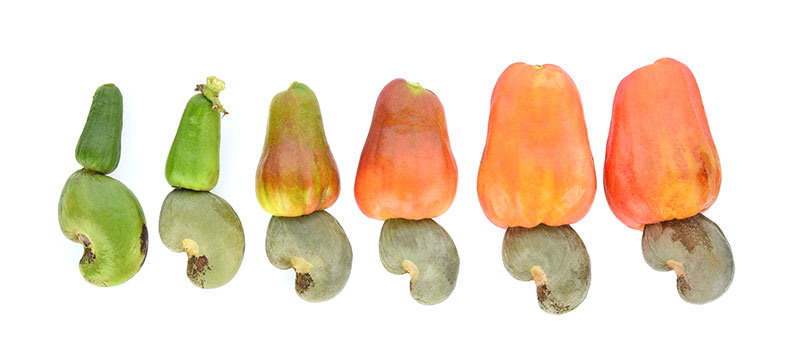A cashew plant is a tropical plant that is sensitive to the cold and does not do well in temperate regions. However, as long as conditions are otherwise favorable, they can grow in warm climates around the world: its range extends just beyond the limits of the tropics, between 25°N and 25°S, wherever the average minimum temperatures do not fall below 16 °C, and drops below 10 °C are rare: it does not tolerate frost. The tree, however, is very resistant to drought and grows even in areas with around 500 mm of annual rainfall: it is well-adapted to hot lowland areas with a pronounced dry season, where the mango and tamarind trees also thrive.
It takes three years from planting before it starts production, and eight years before economic harvests can begin. More recent breeds, such as the dwarf cashew trees, are up to 6 m tall, and start producing after the first year, with economic yields after three years.
Cashew farming, outside of harvest season, is relatively low maintenance requiring minimal agricultural inputs
The cashew nut yields for the traditional tree are about 0.25 metric tons per hectare, in contrast to over a ton per hectare for the dwarf variety. Grafting and other modern tree management technologies are used to further improve and sustain cashew nut yields in commercial orchards.
The tree produces wood as well as for a gum that is similar to gum arabic. The resin within the shells of the fruit is used as an insecticide and in the production of plastics; it also is important in traditional medicines.
















